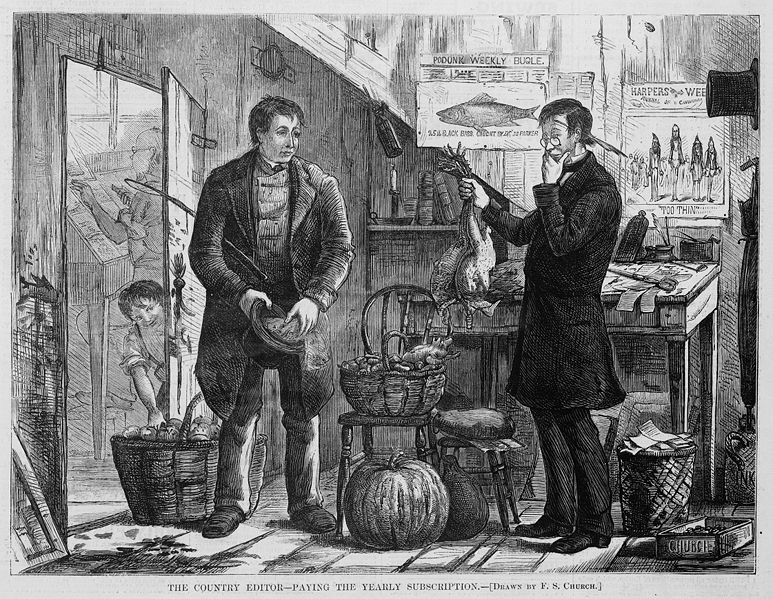As usual, October is moving through mighty quick! Yesterday marked the half-way point toward the end of the month. Here in Utah, the weather is not too cold yet. However, it is still pretty nippy sometimes in the mornings. I can't wait till the hot days are officially over.
Days Till
It is: 15 days till Harvest Day
It is: 40 days till The Good Dinosaur's release
It is: 41 days till Thanksgiving
It is: 70 days till Christmas
In the Spotlight
Unfortunately, I really have nothing interesting to share this week.
Topic of the Week by Christian Ryan
 |
| Boy, do we have pumpkins or what? (Wikimedia Commons) |
What is a pumpkin? If you said a vegetable, you're wrong – the pumpkin is actually a fruit, but more specifically, a berry. Pumpkin we typically associate with the word “pumpkin”, grow and consume derives from the species Cucurbita pepo. As they are in the family cucurbitaceae (which is Latin for “gourd”), they are close cousins of other squashes, gourds, melon (e.g. watermelon) and cucumbers. But these fruits didn't all evolve from a common ancestor (that is, progressively become more advanced through the process of evolution), rather, they all descended from the original member of the “gourd baramin” (or kind) God created on Day 3 of the creation week, in addition to the other plants He made. What sets pumpkins apart from other gourds is their round shape and lightly ribbed skin. Usually pumpkins are orange, but they also come in yellow, red, white or even green. They also come in a wide range of sizes, from the diminutive 6-pound ball and the average-sized 13-pounder, to the massive 2,323.7-pound monster presented by Beni Meier that broke records and claimed the title of world's heaviest pumpkin in Germany last year. Just imagine how much pumpkin pie that would have made!
.jpg/600px-The_great_pumpkin_(6247771547).jpg) |
| Pumpkins can grow to be over a ton in weight, making them the world's biggest berry! Yes, pumpkins are berrys. (Wikimedia Commons) |
Pumpkins are native to North America and were unknown to the Old World until Columbus. In fact, these orange fruits have been grown in Central America for thousands of years by the Native Americans. Pumpkins gained notice among Europeans starting In 1584 when the French Explorer Jacques Cartier was exploring North America's St. Lawrence region. The word pumpkin was derived from his own description of these large fruits, “gros melons”, which was translated into English as “pompions”. Overtime, “pompions” became pronounced as “pumpkins”.
 |
| This picture was made in 1874, but pumpkins have been loved by people for much longer than that! (Wikimedia Commons) |
 |
| Jack-o-lantern's were originally made out of turnips and potatoes! |
“A 1653 French cookbook instructed chefs to boil the pumpkin in milk and strain it before putting it in a crust. English writer Hannah Woolley's 1670 'Gentlewoman's Companion' advocated a pie filled with alternating layers of pumpkin and apple, spiced rosemary, sweet marjoram and handful of thyme. Sometimes a crust was unnecessary; an early New England recipe involved filling a hollowed-out pumpkin with spiced, sweetened milk and cooking it directly in a fire” – History Channel's The History of Pumpkin Pie
 |
| Who doesn't want a little pumpkin pie for Thanksgiving? (Wikimedia Commons) |
A world without pumpkins would surely be very different place.
 |
| Enjoy your pumpkins this year! |
References:
www.sciencekids.co.nz/sciencefacts/food/pumpkins
www.pumpkinfarm.com/fun_facts
www.history.com/topics/halloween/pumpkin-facts
www.thepumpkinfarm.com/faq
www.pbs.org/food/the-history-kitchen/history-pumpkin-recipes
www.history.com/topics/halloween/jack-olantern-history
www.history.com/news/hungry-history/the-history-of-pumpkin-pie
www.wikipedia.org/wiki/pumpkin
www.wikipedia.org/wiki/Cucurbitaceae
No comments:
Post a Comment